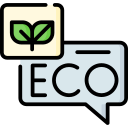
Effective Copywriting Techniques for Sustainable Brands
Today’s chosen theme is “Effective Copywriting Techniques for Sustainable Brands.” Welcome to a space where persuasive words meet planetary responsibility. Expect proof-backed guidance, empathetic storytelling, and ethical tactics you can apply today. If this resonates, subscribe and share your favorite sustainable brand stories—we’ll feature standouts in future posts.
Principles that Build Trust and Inspire Action
01
Avoiding Greenwashing through Specificity
Replace vague claims with tangible details. Instead of saying “eco-friendly packaging,” specify “FSC-certified paper box, 70% post-consumer recycled content, fully curbside recyclable.” Readers remember proof. Share your materials, sourcing, and end-of-life guidance. Have a question about specificity in your niche? Comment with your product, and we’ll suggest concrete language.
02
Balancing Benefits, Features, and Impact
Lead with the benefit the reader feels, then explain the feature that enables it, and close with the broader impact. “Breathe easier with our low-VOC paint—indoor air stays cleaner, and your home’s carbon footprint drops.” Want feedback on your benefit-feature-impact line? Paste it below for a friendly critique.
03
Evidence: Certifications, Data, and Transparency
Credibility accelerates conversions. Cite third-party certifications, publish lifecycle data, and acknowledge trade-offs. A small skincare brand boosted email click-throughs after adding a sourcing heatmap and water-usage stats. Transparency doesn’t scare people away; it invites them in. Share your best proof point in the comments and inspire others.
Storytelling that Connects People with Planet
Center a customer or team member facing a real tension—comfort versus conscience, price versus principles. A bike commuter in rainy Seattle chose your jacket because staying dry meant staying committed. Invite readers to picture themselves succeeding too. Have a customer story to tell? Share it, and we’ll suggest a tighter arc.
Storytelling that Connects People with Planet
Without stakes, sustainability stories feel distant. Show what’s at risk—wasted materials, allergic reactions, or neighborhood air quality. Then present your product as a credible, not perfect, step forward. People act when choices feel immediate. Tell us your product’s key fork-in-the-road moment, and we’ll help sharpen it.
Storytelling that Connects People with Planet
End with a small, achievable action: try a sample, take a footprint quiz, or swap one product this month. Pair outcome with instruction: “Start with our refill size; return empty pouches via prepaid mailer.” Want a tailored micro-CTA? Describe your audience and channel, and we’ll craft one live.



Ethical Conversion Techniques that Still Convert
Make CTAs honest about value and effort: “Start your refill routine today—save time, waste, and money.” Avoid false urgency; use contextual nudges like “Batch ships Friday for lower emissions.” Curious how to rephrase a pushy CTA? Share it here, and we’ll suggest a values-aligned alternative.


Ethical Conversion Techniques that Still Convert
Use reviews that mention concrete results: fewer rashes, longer wear, reduced trash. Present counts transparently and link to your moderation policy. Consider impact counters with methodology notes. Want help turning generic praise into credible proof? Paste a review snippet and we’ll craft a stronger, specific version.
Search-Friendly, Human-Centered Sustainability Content
Match searches to suitable formats: “compostable vs biodegradable” deserves a head-to-head explainer, while “best plastic-free shampoo” needs a comparison guide with criteria. Capture questions from customer emails and forums. Share a core keyword, and we’ll outline a page that meets intent without fluff.

Social Media Microcopy that Mobilizes Communities
Lead with curiosity and value: “The three ingredients in ‘compostable’ packaging that actually matter.” Avoid clickbait; fulfill the promise in your carousel. Add a gentle action: “Save this for your next shopping trip.” Share a recent post, and we’ll rewrite the hook to strengthen retention.

Social Media Microcopy that Mobilizes Communities
Try this flow: Problem in one sentence, practical tip, why it matters, micro-CTA. Example: “Most ‘recyclable’ pumps aren’t accepted curbside—swap to aluminum cap refills; fewer mixed materials mean higher recovery rates. Comment ‘refill’ for our cap guide.” Want a custom framework? Tell us your platform and goal.

